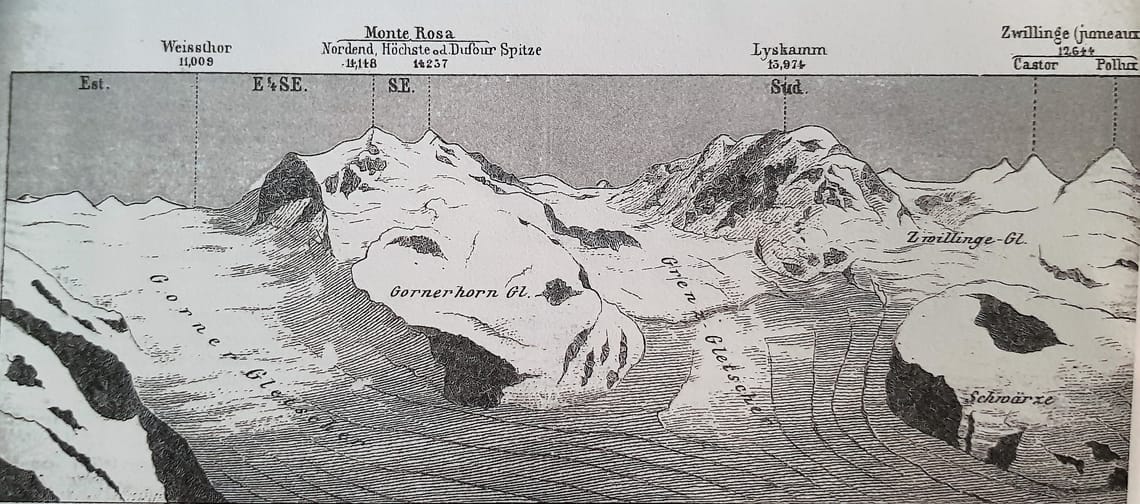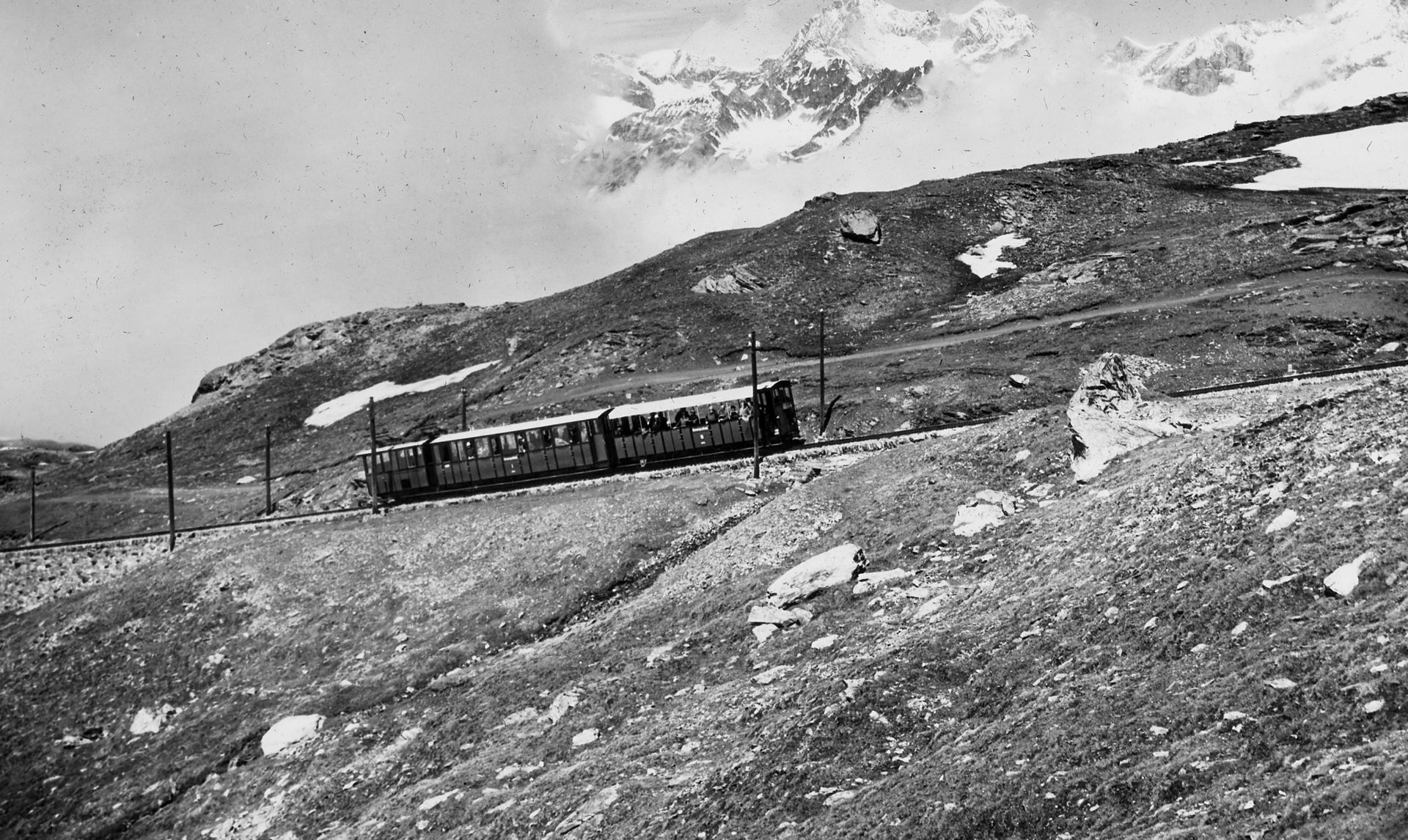How the Gornergrat got its name
Story 82
In 1958, the Gornergrat Railway published the “Gornergrat Chronicle” to mark its sixtieth anniversary. The author F.A. Volmar explored the origin of the terms Gorner and Riffel.
In 1958, F.A. Volmar, a historian and publicist from Bern, was commissioned by the Gornergrat Railway to write a commemorative book for its anniversary. During his research, he also investigated the origin of the names Gornergrat and Riffelberg.
Map of Valais from 1682
He found what he was looking for in a map of Valais from 1682. In his anniversary book, he wrote: “Until the middle of the 19th century, the Kulmhöhe was not referred to as the Gornergrat, but occasionally also as the Riffelgrat or Rothgrat, while Monte Rosa was referred to as the Gornerhorn.” He found neither the Gornerhorn nor the Riffel on the map of Valais created in Brig around 1682 by the land scribe Antoni Lambien. On this map, the Monte Rosa area was still referred to as the Findelhorn, but its glacial lake was already referred to as the Gornersee.
The Gornerhorn
Volmar went on to explain that the mountains on the Italian side of Monte Rosa were still called the Gornerhorn by the people of Zermatt and the Walsers in the first half of the 19th century. He assumed that the term was a Germanisation of the Romansh term cornu (horned).

Murray’s handbook
The term Gornergrat first appeared in 1850 in a directory by Gottlieb Studer. In 1854, John Murray named the area the Gornergrat in his travel guide book.
Volmar also found further references in the map sheet of the Zermatt and Monte Rosa area from 1859. This is where the term Gornergrat was recorded on a map for the first time. The term Gornergrat also featured on the Dufour map in 1862.
Rifila – a comb-like device
Volmar also tried to interpret the term “Riffel”. He speculated: “Riffel could be derived from the Old High German rifila: a jagged, comb-like or saw-like device.” According to his research, the term originally referred to the striking Riffelhorn. This gave rise to the names of Riffelberg, Riffelboden and Riffelalp. If you take a close look at the Riffelhorn, you can clearly see the spikes and the comb shape.


